The Barely Known Story of the Longines Timepieces Onboard Bathyscaphe Trieste And On The Wrist of Piccard
You might know about the Rolex DSS, but Longines was also onboard the Trieste
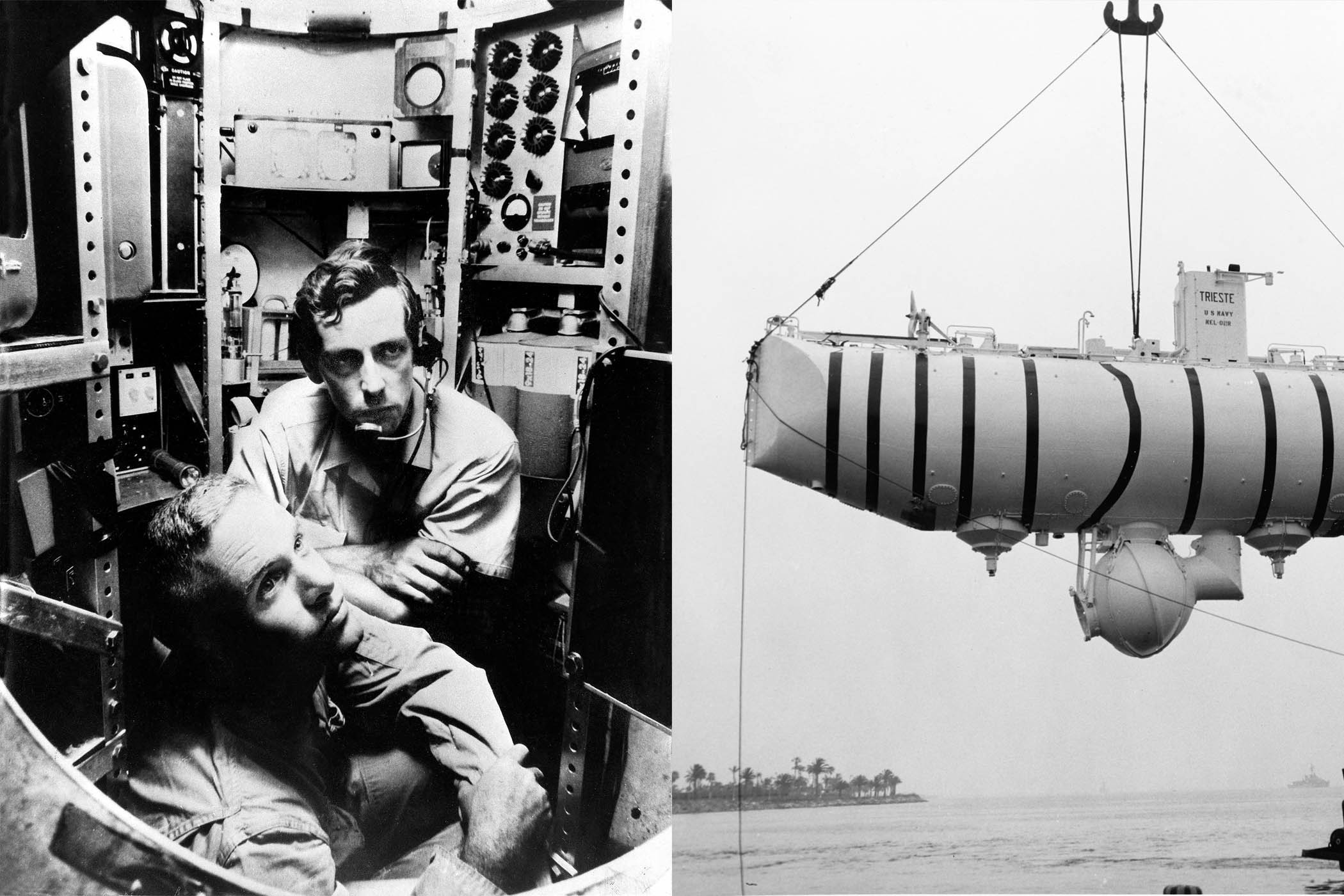
We, human beings, have a fascination for exploration. We are pioneers, adventurers and mostly, we’re curious to know everything about our planet and what’s around it. Man has travelled through space, has been on the Moon, flew in ultra-fast planes, and also explored the deepest point on planet Earth, Challenger Deep near the Mariana Trench. On 23 January 1960, swiss oceanographer Jacques Piccard and US Navy Lieutenant Don Walsh were the first crew to reach the bottom of the Challenger Deep, a story well known by watch enthusiasts, thanks to the involvement of Rolex in the project. But what is far less known is the presence of Longines timepieces, both onboard the Trieste, and on the wrist of Piccard himself (at least in the first record dive of 1953). And today, with a bit of help from the Longines Museum, we give you more details about this Longines x Piccard connection.
Piccard, father and son
Behind the story of the Trieste and all the subsequent record dives to finally reach the deepest point on Earth are two men, a father and his son, Auguste and Jacques Piccard.
Auguste Piccard (1884-1962) was a Swiss physicist, inventor and explorer, known for exploring both the Earth’s upper atmosphere and its greatest depths. A graduate from the Swiss Federal Institute of Technology in Zürich and later a professor of physics in Brussels, he’s mostly known for his interest in ballooning and a curiosity about the upper atmosphere. This will lead him to build a spherical, pressurized aluminium gondola that would allow him ascent to a great altitude – on 27 May 1931, Piccard and Kipfer will reach a record altitude of 15,781 metres or 51,775ft, becoming the first men to enter the stratosphere. In this instance, they are widely considered the first men to visually observe the curvature of the Earth. Later on, Auguste Piccard will show interest in the exploration of the depths, when he realized that a modification of his high-altitude balloon cockpit would allow descent into the deep ocean.

By the mid-1930s, Auguste Piccard started to design his first bathyscaphe, a free-diving self-propelled deep-sea submersible. Due to WWII, the construction only resumed in 1946, and in 1948, he finalized the first-ever bathyscaphe, FNRS-2, named after the Fonds National de la Recherche Scientifique, and built in Belgium (FNRS-1 was the balloon used for Piccard’s ascent into the stratosphere in 1938). The concept was a bubble-shaped cockpit to maintain normal air pressure, attached below floats that can be filled with water in order to descend. Later given to the French Navy (in 1950), FNRS-2 will break a new manned dive record in 1954, reaching 4,176m after some modifications. After this first bathyscaphe, Piccard will develop a second one, one that will become a legend, the Trieste.
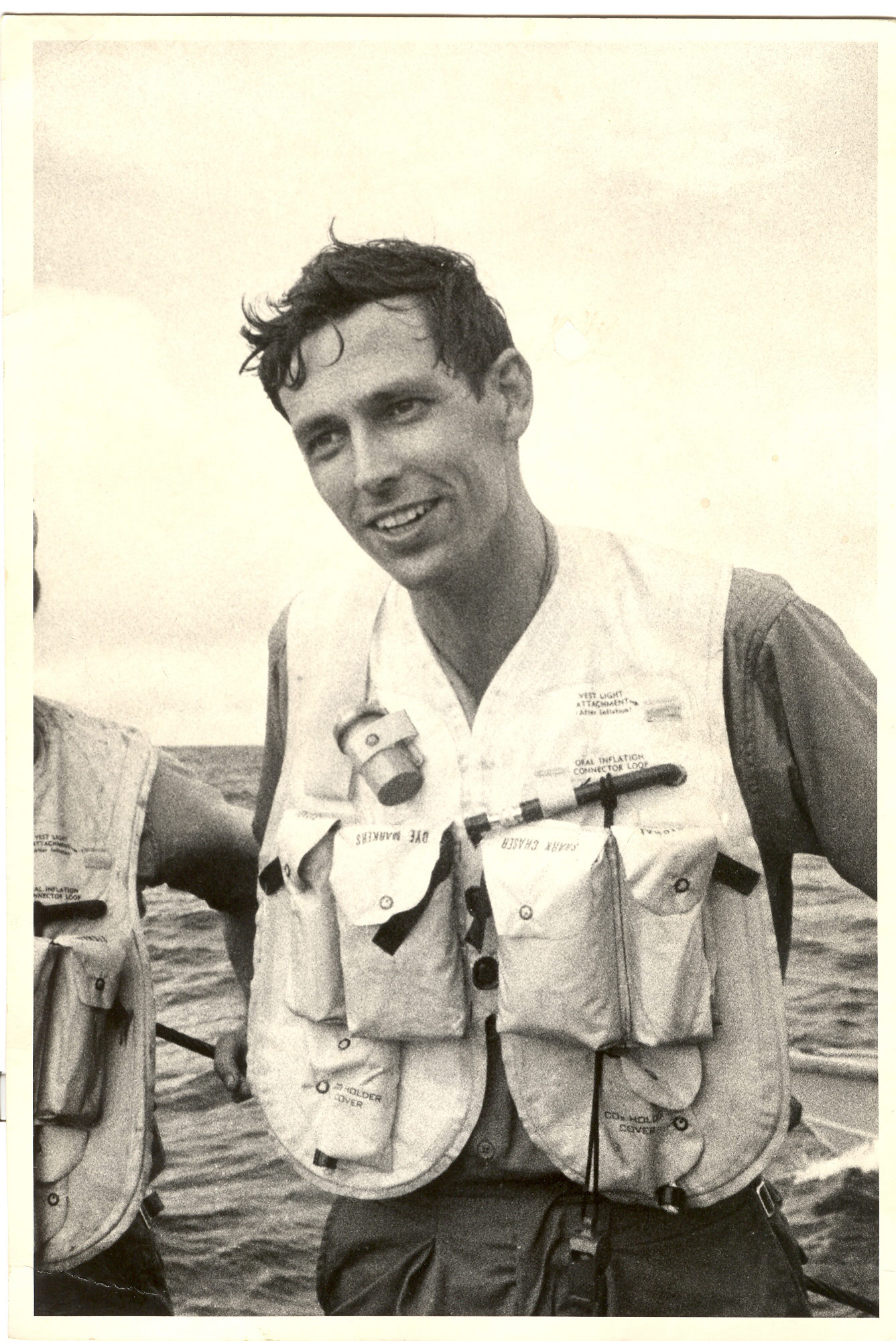
His son, Jacques Piccard (1922-2008) followed suit. A swiss oceanographer and engineer, he started his career by teaching economics at the University of Geneva… But in the meantime, he was also helping his father improve his bathyscaphes. In 1953, father and son will achieve their first record dive – on 30 September 1953 in the Mediterranean Sea – reaching a depth of 3,150m. And then, Piccard will seek financial help from the U.S. Navy, in order to improve the family’s bathyscaphe Trieste, which will result in the completion of Project Nekton – U.S. Navy codename for the series of deep dives that will end when reaching Challenger Deep.
The Bathyscaphe Trieste
Designed by Swiss Auguste and Jacques Piccard, and constructed in Italy from the early 1950s, Trieste is certainly one of the most famous submarines ever created. The conception of Trieste is an improvement of what father and son Piccard learned with FNRS-2 and the ship was launched officially on 26 August 1953 into the Mediterranean Sea, near the Isle of Capri. Trieste consisted of a float chamber filled with gasoline and a separate pressure sphere to hold the crew – a conception that was named bathyscaphe by the Piccards (in opposition to the bathysphere concept, a sphere that was lowered to depth and raised again to the surface by a cable attached to a ship.)
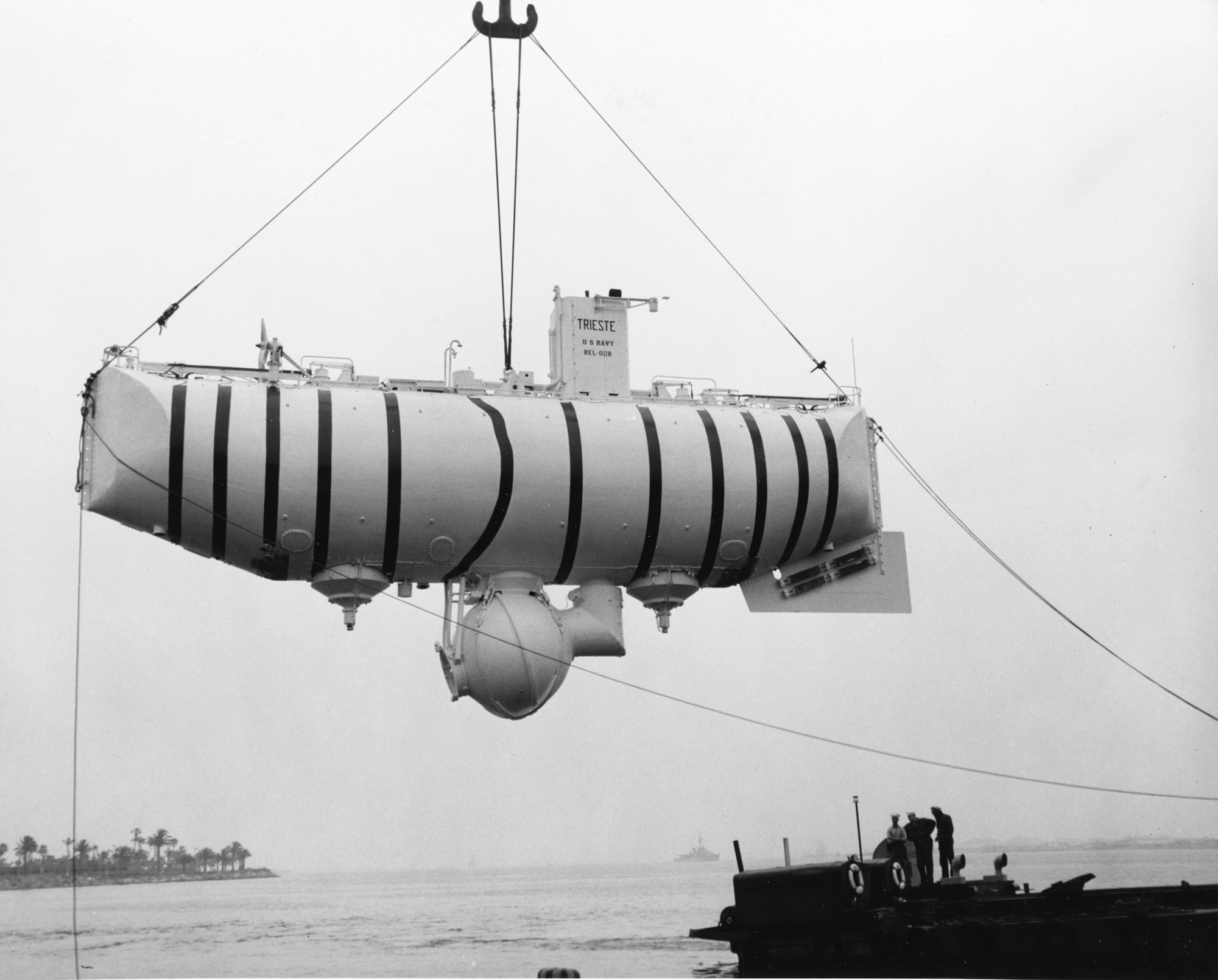
The first important step in the history of Trieste occurred on 30 September 1953, when father and son Piccard reached a depth of 3,150m, a record at that time for a manned dive. The record will be broken, as explained above, by the French Navy with another Piccard-designed bathyscaphe – FNRS-2, in 1954.
The second step in the life of Trieste has to do with the United States Navy, which purchased the ship after several years of operation in the Mediterranean Sea in 1958, for USD 250,000. The idea was that Trieste will be the main tool to complete Project Nekton, with the sole idea to reach the Challenger Deep, the deepest surveyed point in the world’s oceans.
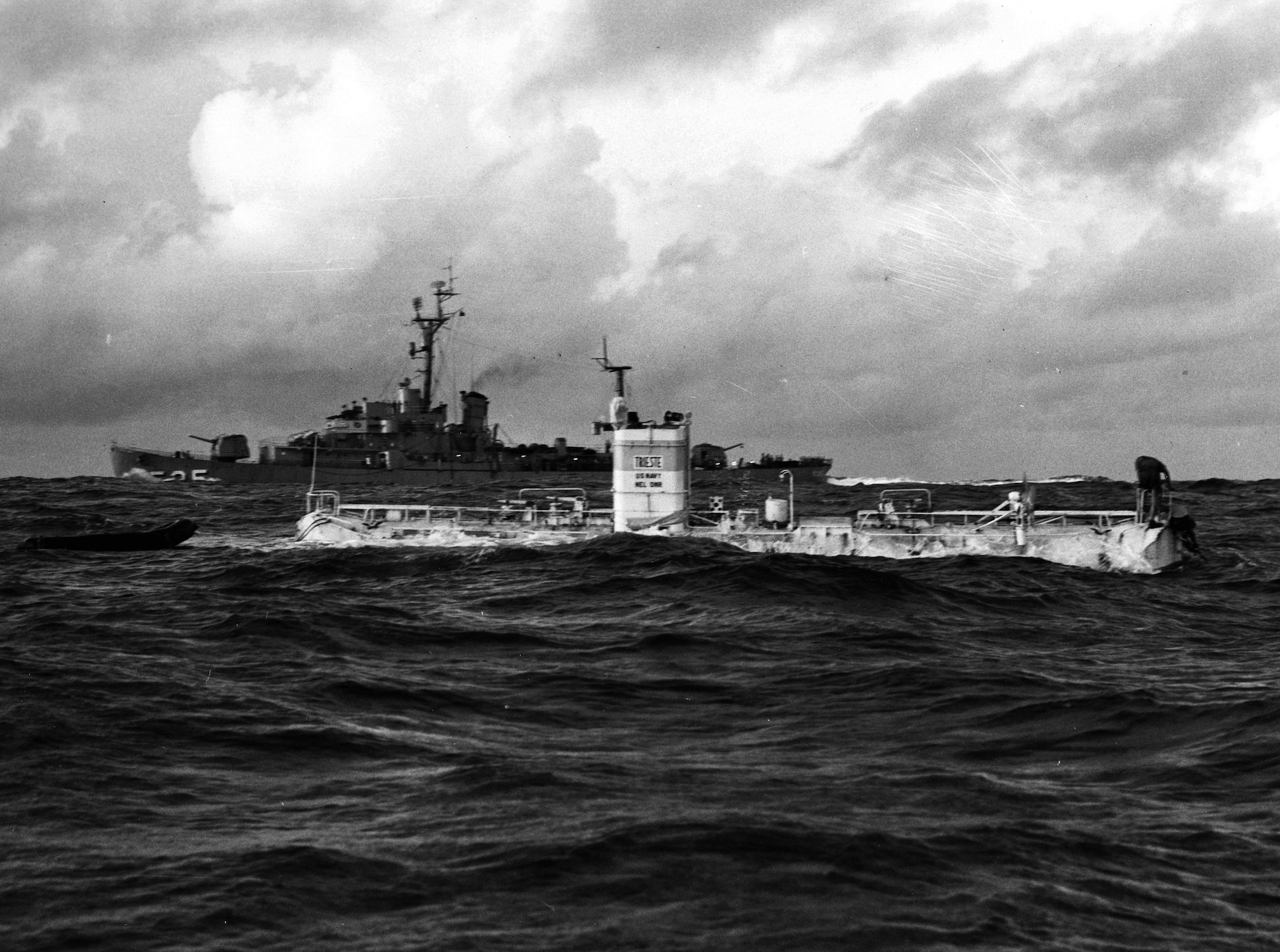
In October 1959, bathyscaphe Trieste was sent to Guam to participate in Project Nekton, beginning a series of U.S. Navy-sponsored dives in the western Pacific Ocean. Oceanographer Jacques Piccard and U.S. Navy Lieutenant Don Walsh will be the crew for these research dives and the project culminated on 23 January 1960, when Trieste, with both men on board, reached the floor in the Challenger Deep, the deepest southern part of the Mariana Trench – a first for a vessel, crewed or uncrewed. While the onboard systems indicated a depth of 11,521 metres, the real depth reached was later revised to a more precise 10,916 metres.
After a descent that took 4 hours 47 minutes, Piccard and Walsh will spend twenty minutes on the ocean floor, in the small (2.16m in diameter) pressure sphere, attached to the underside of the float. After an ascent of 3 hours and 15 minutes, they finally made it to the surface and entered history.
Rolex and Trieste
When talking about the Piccards and the Trieste, it is impossible not to mention Rolex and the very-special-indeed Rolex Deep Sea Special watches that the Crown developed in order to test the water-resistance of its watches to incredible pressures and depths. In addition, since two of these RDSS will be auctioned soon, one by Phillips (a display model) and one by Christie’s (in fact, number 1, which was attached to the exterior of Trieste in 1953 during the first record dive), a small reminder seems appropriate.
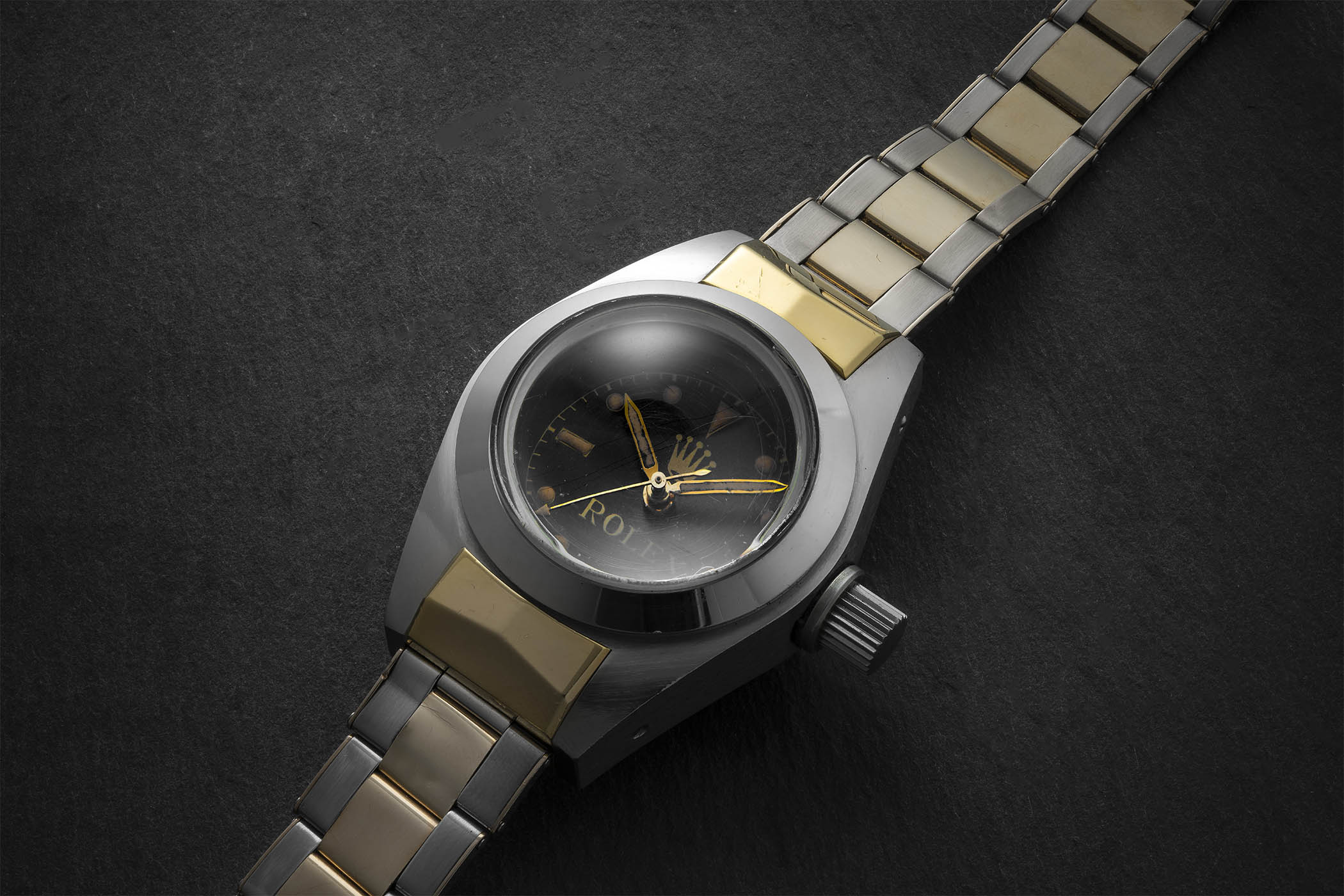
According to auction house Christie’s, “seven prototypes of the Rolex Deep Sea Special were built between 1953 and 1960. This much is absolutely certain, only three have so far been identified: the Deep Sea Special N°1 with a ‘low glass’ (made from Plexiglas) that accompanied Trieste on its first deep-sea trial down to 3,150 meters (10,245 feet) off the island of Ponza in 1953; the Deep Sea Special N°3 with a ‘high glass’ (a taller and thicker crystal, also of Plexiglas, one of the invaluable learnings from N°1) that made the trip down to the bottom of the Mariana Trench (10,916 meters, 35,814 feet) in 1960 and is today out of reach but on display, together with the Trieste, at the Smithsonian Institute in Washington DC; and Deep Sea Special N°5, also a ‘high glass’ version, which presumably served as a proving ground for further extreme testing in the period leading up to 1960.”

Also, Christie’s adds that “in the early to mid-1960s, to celebrate the dive down to the world’s deepest place Rolex produced about three dozen display models to share their exploit and know-how with the public,” which is the case for the model offered by Phillips.
What’s important about these Deep Sea Specials, and without doing the entire history again (there are extremely complete articles on this topic), is that these watches were experimental models attached to the EXTERIOR of the Trieste. They were not worn on the wrist of the crew members but, in this instance, made history for being some of the most water-resistant watches ever created… and that, with 1950s technology and manufacturing techniques. Nothing short of an incredible achievement.

But… If the story of the Rolex Deep Sea Special watches and the connection with the Trieste is certainly widely known, what’s coming next is far less popular – and in the case of the Longines wrist chronograph, something that might have never been told before.
The Longines chronograph worn by Jacques Piccard in 1953, during the first record dive
As said, the Rolex Deep Sea Special watches were not meant to be worn on the wrist and were attached to the exterior of the Trieste. However, thanks to photos and letters shared by the Longines Museum, we were able to see Jacques Piccard during the record dive of 30 September 1953 with a chronograph watch on the wrist – Ps. the watch is easily visible in a series of photos published in the book Auguste. Jacques. Bertrand Piccard : A la Conquête du ciel et des Abysses (Gallimard, 2009) by Jean-François Rubin & Arnaud Schwartz, and in the book Au fond des mers en bathyscaphe (Arthaud, 1954) by Auguste Piccard, however, due to copyright, we are not allowed to post these images here.
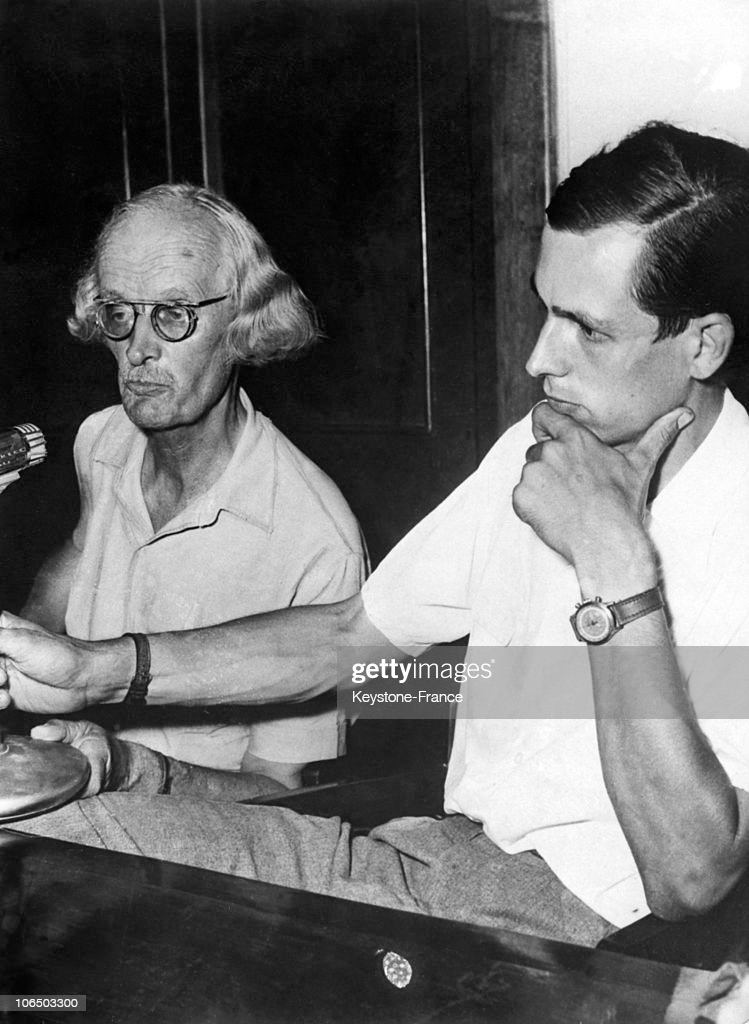
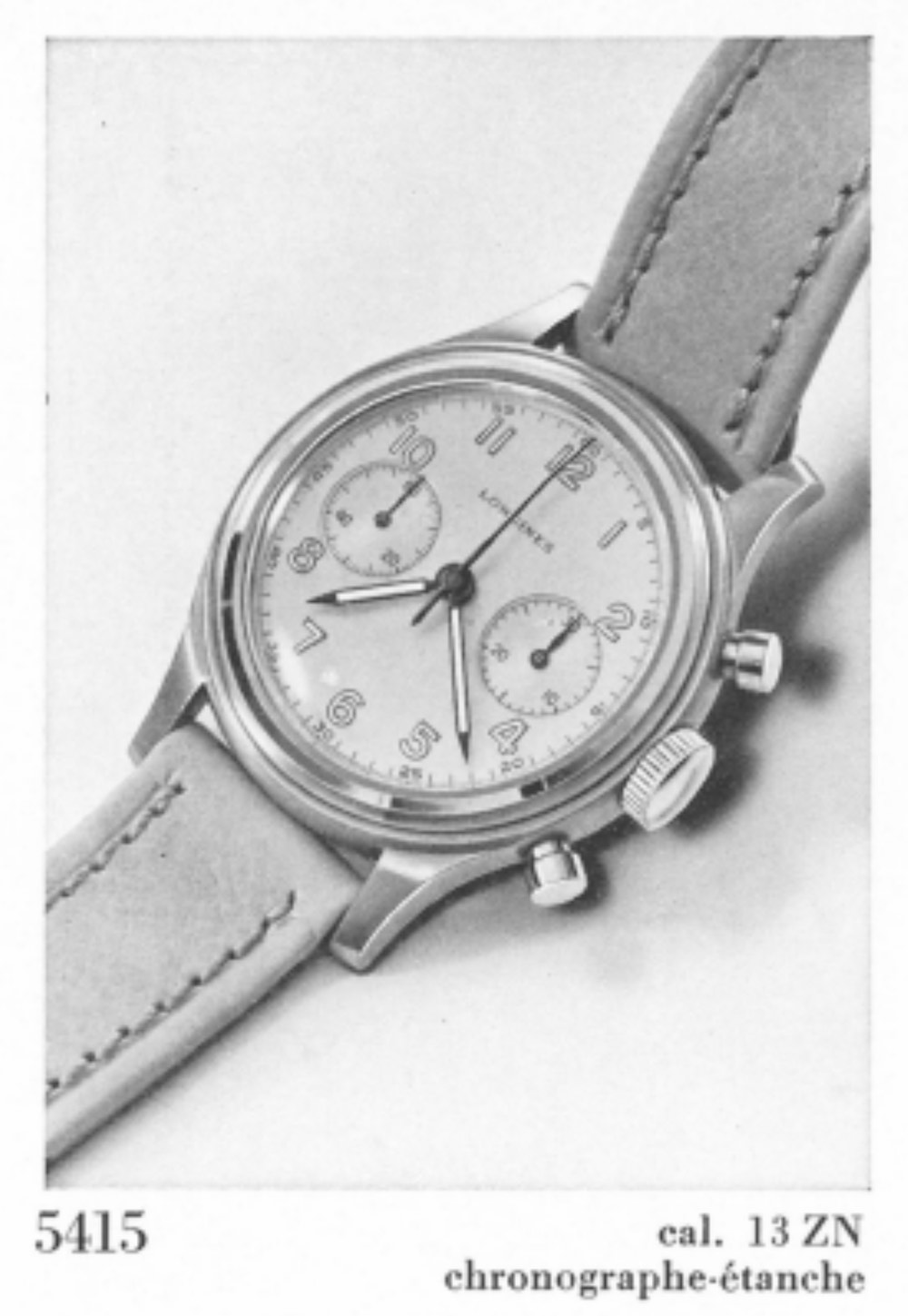
So, to make things very precise, Jacques Piccard, during the first record dive achieved by father and son in September 1953, at a depth of 3,150 metres, was wearing a Longines 13ZN Chronograph reference 5415, serial number 7136197. This watch is a wrist chronograph in stainless steel, with a hand-wound chronograph movement calibre 13ZN, invoiced on 20 September 1947 by Maison Bessire, agent of Longines in Belgium. It features a white dial ref. 11-90 with Arabic numerals in radium and possibly luminous hands with radium too.
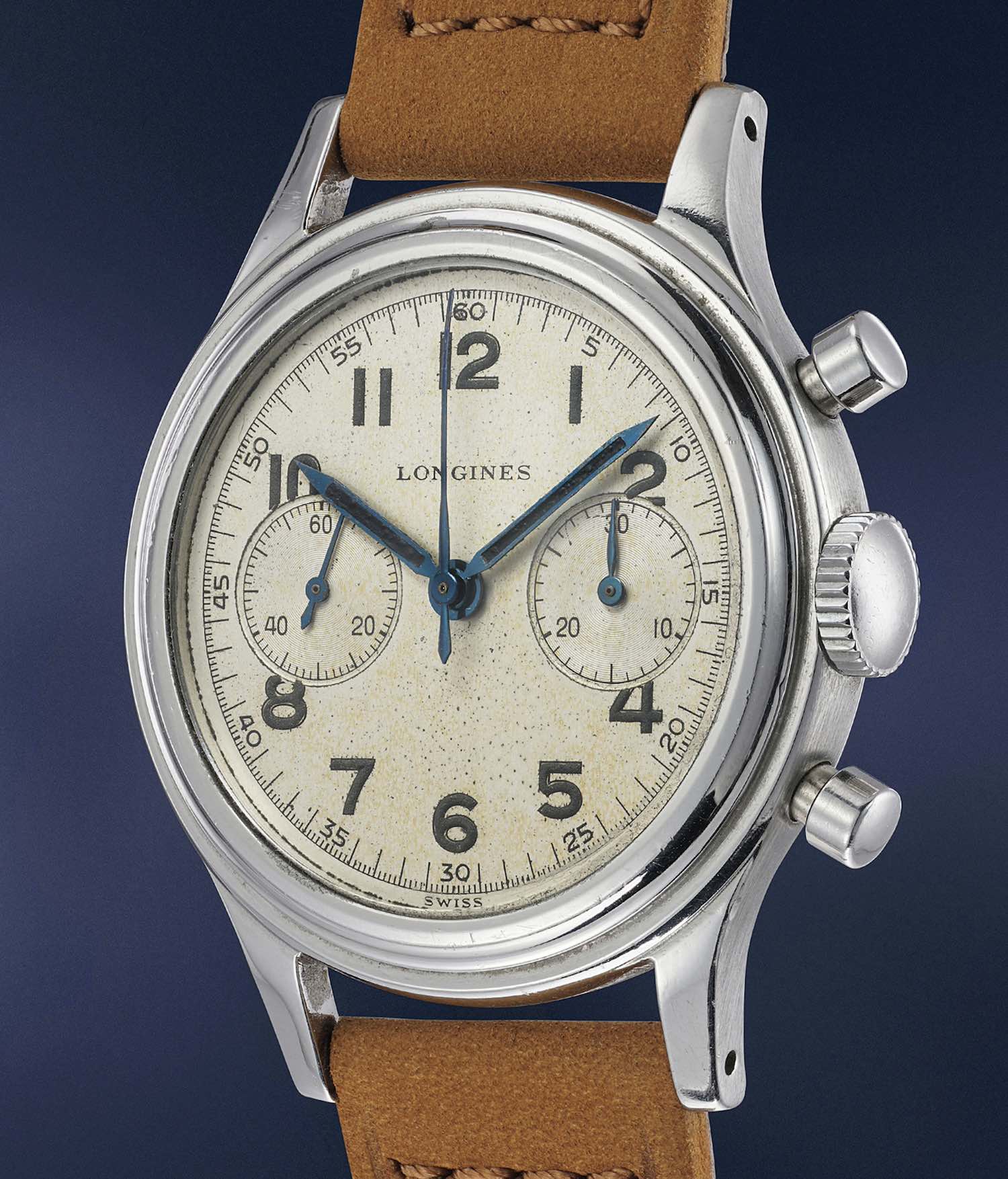
The Museum explained to us that two watches were ordered by Piccard for experimental use, with serial number 7136196 and serial number 7136197. The latter was the one worn by Jacques Piccard in 1953. To further attest the presence of this watch on the wrist of Jacques Piccard during the historic dive with Trieste in 1953, Longines presented to us two letters, a communication between Longines and Piccard, concerning the need to service this watch:
Above: a letter from Jacques Piccard to Longines on 19 December 1953 – in the letter, Piccard explains that he wants to send his Longines 13ZN Chronograph for service, with the need to change the Plexiglas. More importantly, he says in the second paragraph, “I also want to inform you that I was wearing on my wrist this watch during the dive with Bathyscaphe Trieste at 3,150m, on 30 September (1953)”
Above: a letter from Longines answering to Piccard, on 30 December 1953, where the company shows its pleasure to know that the watch (later clearly mentioned as number 7136197) was onboard the Trieste for the 1953 record dive. It also mentions some Longines stopwatches, but more later on this topic.
The Longines Stopwatches onboard Trieste
Somewhat better known is the story of the timing devices that were on board the bathyscaphe Trieste, to be precise a Movado chronometer (a clock) and two stopwatches from Longines – as already mentioned by Roger Ruegger in Watchtime and Rescapement.
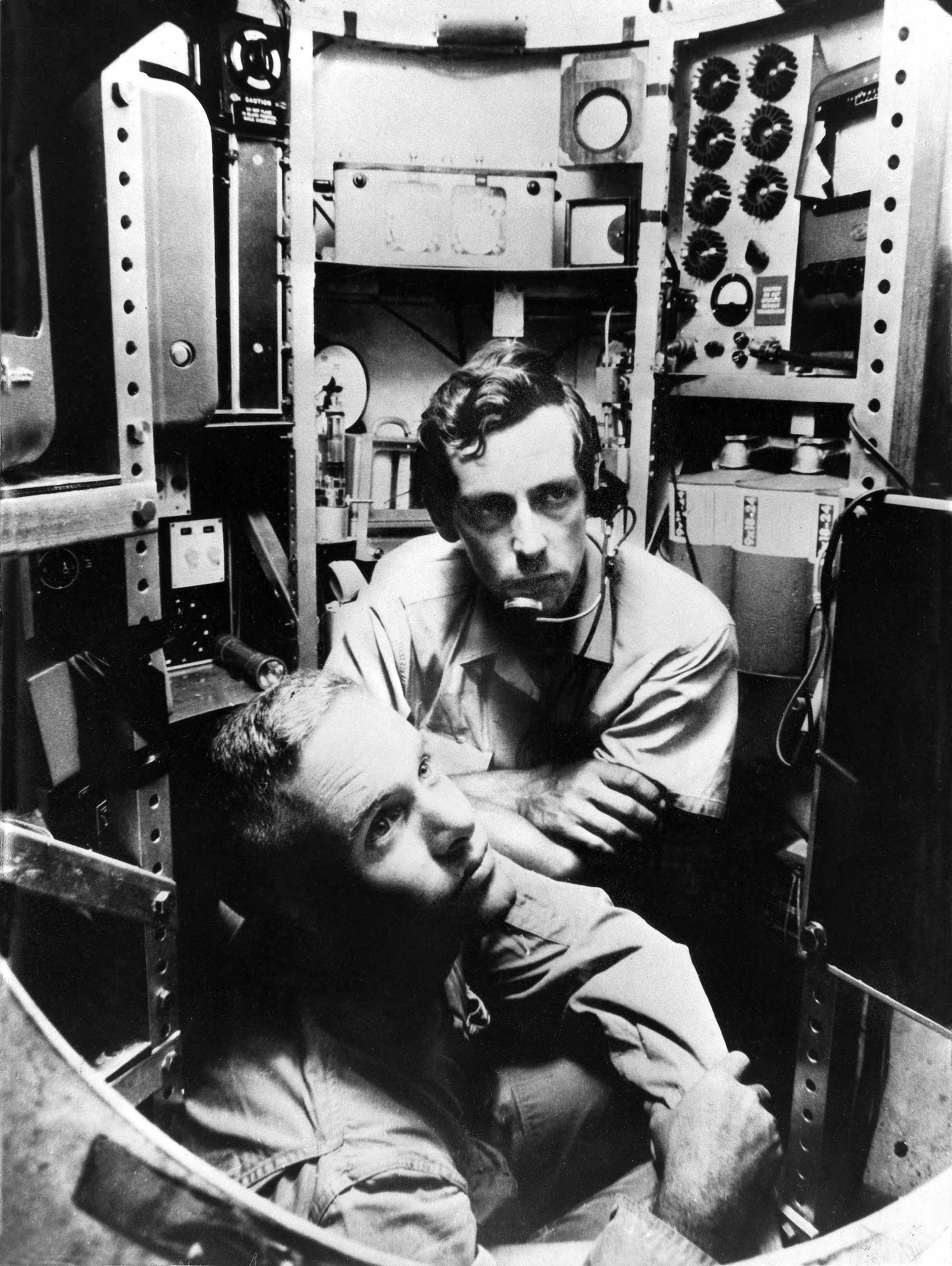
The bathyscaphe Trieste was a complex machine, which was created to dive into uncertainty. As such, the Piccards featured several safety systems. One of them, operated by the two Longines stopwatches, was already introduced in the bathyscaphe FNRS-2. It consisted of a time device that would cut automatically the power of the ballast after a given amount of time if the bathyscaphe hadn’t reached the desired depth.

This system will be used again in the Trieste, during the record-breaking dive of 1960, as attested by the photo above. Also, the letters between Longines and Jacques Piccard mention the presence of these stopwatches in the 1953 dive.
Above, a letter from Maurice Savoye, director of Longines, on 10 November 1953. Mr Savoye explains his enthusiasm regarding the achievement of the Piccards in September 1953, after reaching 3,150m with Trieste. He also explains having read the “Corriere d’Informazione” (letter of information) from 16/17 October 1953, reporting the presence of the Longines stopwatches and the safety system installed onboard Trieste. At the same time, and even though Longines’ director feels extremely grateful to be associated with this achievement, the brand abandon the idea of communicating publically on this specific topic with an advertising campaign, but he mentions the possibility to explain this achievement to the brand’s partners and friends.
Above, another letter (the same as shown before, regarding the service of the 13ZN chronograph) making mention again of the stopwatches and the safety device installed onboard Trieste.

Finally, this device can be seen inside the reproduction of the Trieste’s gondola exposed at the Deutsche Museum in Munich, as seen above in a slightly different configuration for the outer protective box, which is coloured in blue. As for the actual bathyscaphe Trieste, it is now retired and on display at the National Museum of the U.S. Navy in Washington.
We’d like to thank Longines and specifically Daniel Hug, Head of Branding and Heritage of the brand, for helping us with the historical background.


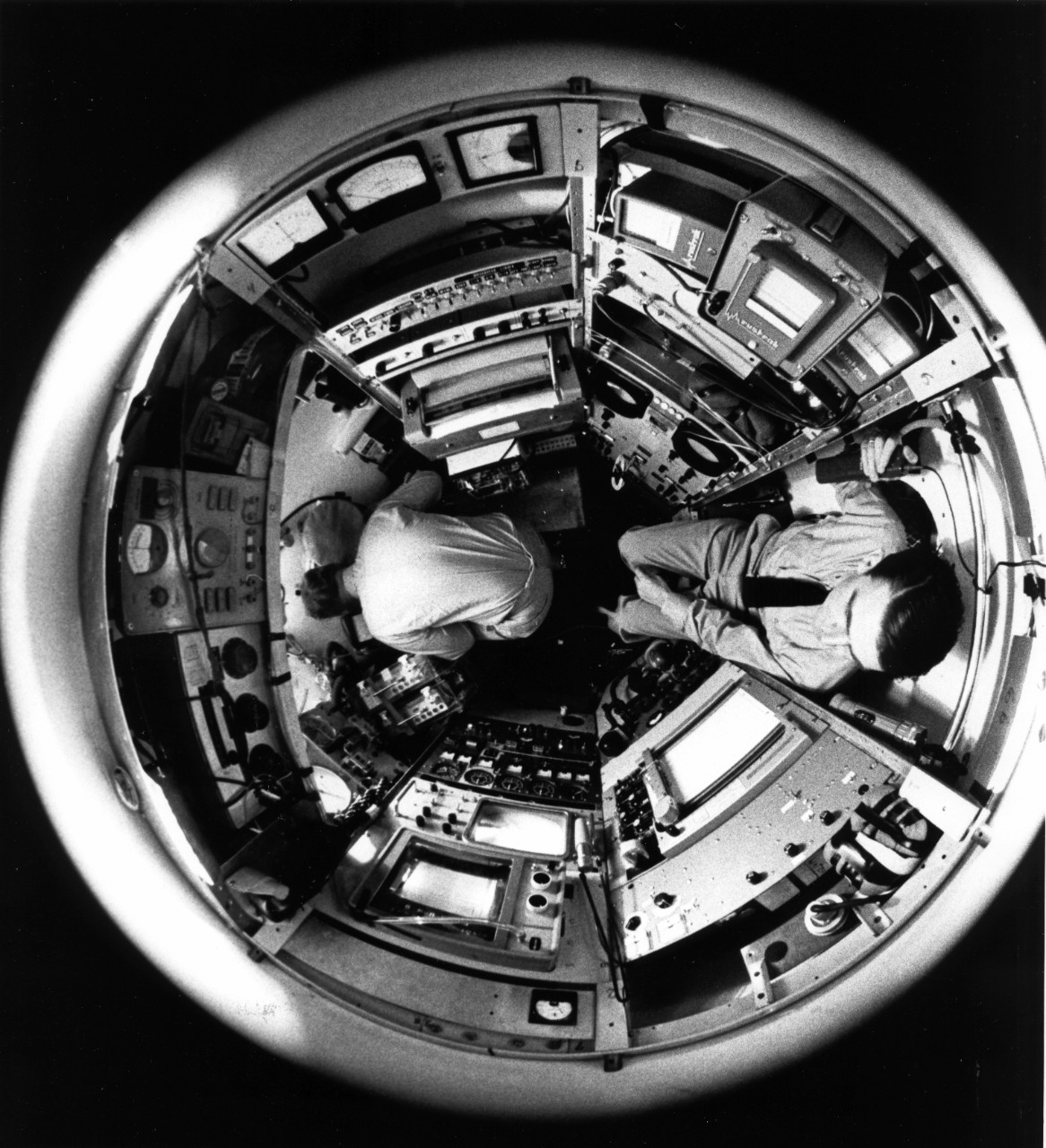
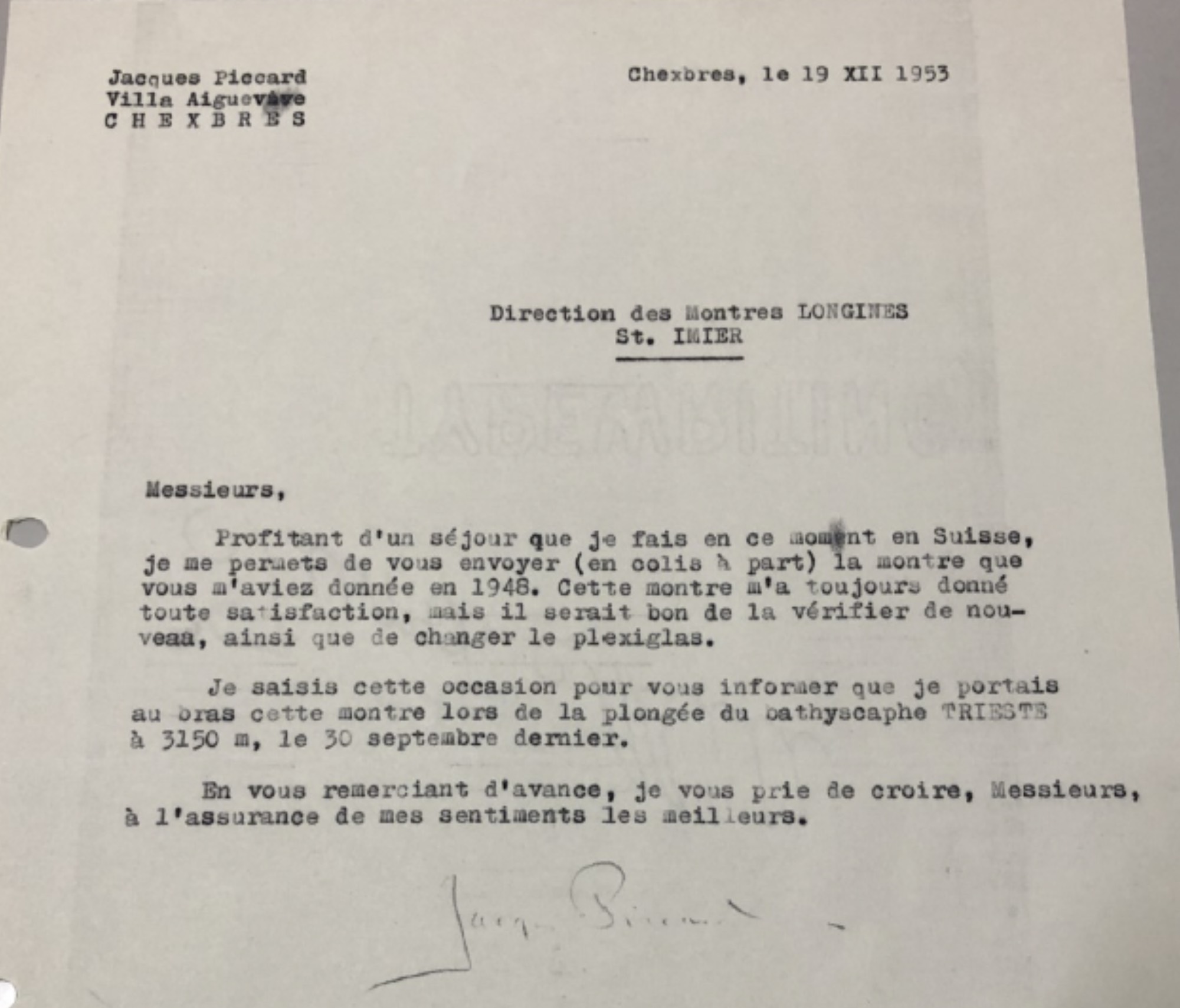





4 responses
Remarkable story. Thanks for posting this. It reminds me very much of the truth behind the Mount Everest expedition where he wasn’t wearing a Rolex at all, but rather carried a Smiths to the summit. Here, they were wearing a Longines, which also nobody talks about. Such is the power of Rolex hype.
What is Longines up to.? Time to elevate the brand above Seiko?
From today’s perspective, it is inconceivable that Rolex should claim all the glory. Longines, on the other hand, exercised noble restraint and modesty, although they were in fact the ones who were instrumental in the record hunt.
Another true story which important role Longines played in this period and even more respect for the 13zn – one of the most beautiful vintage chronographs ever!
Standard. Rolex does marketing, Longines does horology. It always amuses me the assumption that submariners should wear dive watches. If you need a dive watch on a submarine (or ship), things have gone very wrong and flooding your watch is the least of your worries! Accurate timing is key: chronographs are king.